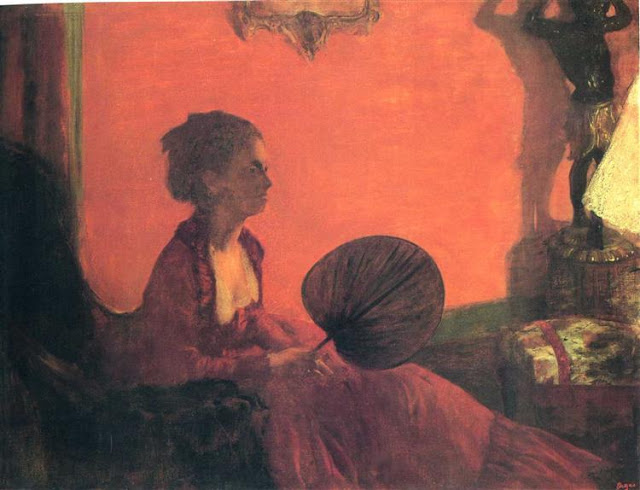One of the greatest revelations during the course my painting instruction has been the power of the silhouette. Surprisingly, I was told (and found it to be true) that if you paint the space AROUND your subject, you can practically skip painting the subject itself. The viewer's eye tends to fill in all the missing information. And if the "background" forms an interesting shape around the subject, like it does in the painting below, the viewer's eye is completely enthralled.
Édouard Vuillard was also a master of this approach. Who can leave his portrait of his grandmother (immediately above) off the "Best Hits" list when it comes to silhouettes? This particular painting is almost a classic side profile, which we commonly call "silhouettes". But keep in mind that many of these paintings are not simple side profiles, but rather show figures in full volume.
Vuillard's women in the lamplit room is an another example of the power of the outlined form. Simple shapes of color are all we are given to describe these two women. There is absolutely no modeling of their figures. Yet we know exactly what they are doing, and can take a good guess at the fabric of the clothes they are wearing.
The power of the silhouette is effective in still lifes and other subjects, as well as human figures. I'll conclude with a painting by Pierre Bonnard, showing an room with an open window. Even though the table and chair--even the walls and bed--are scarcely painted, we understand exactly what they are and where they are placed. It goes to prove the maxim that sometimes "less is more"!





No comments:
Post a Comment